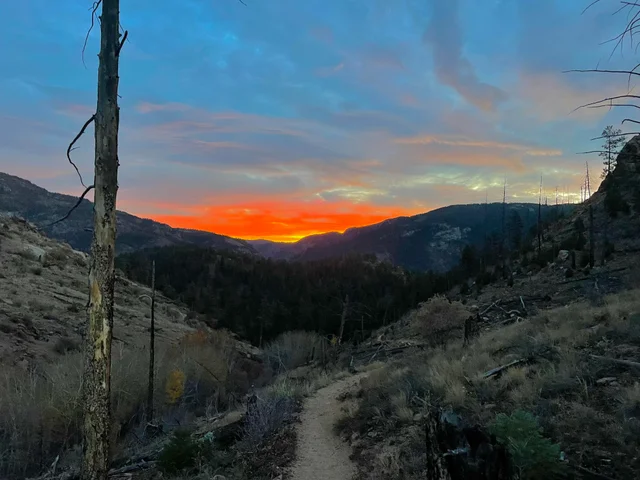- Crime Scene Drawings
- Evidence
- DNA UM1 Profile
- CoraFiles
- Horita's DNA/Bode Notes
- Drive-Stun Wounds
- FGG Policy
- Morrissey w/Silverman
- Dougherty w/Silverman
- Victim Rights Act
- Victim Shoes
- Ransom Note
- Autopsy Report
- Thomas Deposition
- JBRCE Timeline
- 911 Call
- Acronyms
- Body
- Body - Internal
- Body - Head
- Body - Neck
- Book List
- Burke Did It?
- Clothing
- Cords
- Cover Up?
- DNA/Blood
- Duct Tape
- Evidence Interpretation
- Fibers
- Foreign Faction
- Friends
- Intruder
- Intruder - Sex Offender
- Intruder - Sexual Predator
- Intruder - Aquaintance
- John Mark Karr
- Neighbors
- Patsy & John Killers?
- Patsy
- Pineapple
- Prior Abuse?
- Ransom Note
- RN Comparisons
- RN Interpretations
- RN Movie Comparisons
- RN Who Wrote It?
- Staging
- Stun Gun
- Worked for Ramseys
- Who is Who in the Case?
- pdf Library
Evidence for an Intruder
Lou Smit Theory
Lou Smit (now deceased) has developed the most complete account] of the evidence that points to an intruder. This account both summarizes the intruder evidence and speculates on the nature of the killer. It does not narrow down whether the intruder was a random stranger, someone who knew the family or a close acquaintances. Smit was hired by the Boulder District Attorney's Office due to his extensive experience as a homicide investigator for thirty-years. (SMF P 94; PSMF P 94.) Detective Smit *1337 is widely considered to be an expert investigator who has successfully cracked other child murder investigations. (See, e.g., SMF P 94; PSMF P 94; Hunter Dep. at 46-47; Steven Thomas, JonBenet: Inside the Ramsey Murder Investigation 167-169 (2001).)
During the course of his tenure with the police department, Detective Smit became familiar with all aspects of the murder investigation. (SMF PP 95-96; PSMF PP 95-96.) He resigned from the investigation at some point in September 1998, however, because he felt that the Boulder Police Department refused to investigate leads that pointed to an intruder as the murderer of JonBenet, and instead insisted on focusing only on defendants as the culprits. (SMF PP 97, 101; PSMF PP 97, 101.)" (Carnes 2003:32-33).
Intruder Theory Supporters Removed From Investigation. "Two other men, Detective Steve Ainsworth and Assistant District Attorney Trip DeMuth, who also believed the evidence pointed toward an intruder as the killer, were soon thereafter removed from the investigation. (SMF PP 98-100; 102; PSMF PP 99-100; 102.)" (Carnes 2003:33).
Judge Carnes Opinion.
Judge Julie Carnes (2003) concluded in a 93 page opinion dismissing a lawsuit by Chris Wolf against the Ramseys that: "the weight of the evidence is more consistent with a theory that an intruder murdered JonBenet than it is with a theory that Mrs. Ramsey did so."
Mary Keenan Statement.
A week later DA Mary Keenan issued her own statement: "I agree with the Court's conclusion .... Although issued in the context of a civil case, the Court's ruling is a thoughtful and well reasoned decision based on the evidence that was presented by the parties in that case. It should be read in its entirety."
Grand Jury.
The grand jury's indictment of both Ramseys is not necessarily an indication that they did not believe Lou Smit's theory of an intruder who entered the house through a broken window in the basement. An anonymous Internet poster has noted: "those jurors may have taken the Ramseys at their word and actually believed the intruder theory, and held both parents responsible for leaving an entry point unattended while not setting a burglar alarm to warn of an intruder's having gotten into the basement, with their children being the first line of defense on the second floor." In addition, the Ramseys had a house alarm installed but had failed to turn it on, which likewise might have been viewed as negligent.
Similar Cases Involving Intruders
Child Homicide Cases Involving Ransom Notes.
A list of cases in which a genuine ransom note was followed by the death of the kidnap victim is here. According to Laura James, "William Heirens was a sex killer. He left a ransom note. He kidnapped a little girl from the bedroom of her family home in the middle of the night, and later raped and killed her. The Susan Degnans case was an example of a 6-year old taken from her bed while her parents slept one floor above.
Specific Evidence for An Intruder
How Could An Intruder Enter the House? Keys. According to acandyrose.com, the following individuals were known to have keys to the Ramsey house: Fleet White (friend) - PMPT 179; Jay Pettipiece (painter) - PMPT 435; Joe Barnhill (neighbor) - PMPT 179; John Andrew Ramsey - PMPT; 179; John Ramsey - PMPT 179; John Fernie (friend) - PMPT 179; Linda Pugh (housekeeper) - PMPT 179; Linda Wilcox (housekeeper) - PMPT 145; Patsy Ramsey - PMPT 179; Nedra Paugh (relative) - PMPT 179; Suzanne Savage (babysitter) - PMPT 145.
House Alarm Off.
Ramseys "have indicated that their house was not secure during the night of December 25, 1997, and that they had not turned their security alarm on. (SMF P127; PSMF P 127.)" (Carnes 2003:86)
Open Doors and Windows.
"at least seven windows and one door were found "open" on the morning of December 26, 1997. (SMF P 126; PSMF P 126.)" (Carnes 2003:86) "The term "open" was not defined. It is, therefore, not clear if the entrances were ajar or unlocked." (Carnes 2003:Note 31). According to Lin Wood's motion in Burke Ramsey's 2016 defamation case against CBS News, "at least seven windows and one door were found unlocked on the morning of December 26, 1996. A door from the kitchen to the outside was found open" (paragraph #166). The latter is clearly a reference to the butler door being found ajar, suggesting "open" = "ajar." A number of windows were accessible from the ground level, including a window-well, with removable grate, over three windows that opened into a playroom area of the basement. (SMF P 128; PSMF P 128.) This window-well is located on the back side of the house, hidden from the front of the house and from neighbors. (SMF P 130; PSMF P 130.)" (Carnes 2003:86)
No Snow on Sidewalks.
"Contrary to media reports that had discredited an intruder theory, based on the lack of a "footprint in the snow," there was no snow covering the sidewalks and walkways to defendants' home on the morning of December 26, 1996. (SMF P 139; PSMF P 139.) Hence, a person walking along these paths would have left no footprints." (Carnes 2003:90).
Fernie Account.
"John Fernie was angry when he read Charlie Brennan's story about footprints. Like many media stories, this one came from an unnamed source and made the Ramseys look guilty. Fernie wondered if the source was provided the reporter with all the facts. He knew that his own footprints were there in the snow that morning. He had driven up the back alley to the Ramsey's house just after 6:00 A.M. in response to Patsy's frantic call that terrible morning. He remembered walking along the brick sidewalk to the patio door, looking through the glass panel, and reading a line or two of the ransom note, which was lying on the floor just inside the door. Then he ran through the snow-covered grass, around the south side of the house, to the front door (emphasis added). If the cops had been looking, they would have found his footprints. A year and half after JonBenet's death, Fernie told a reporter that the police still had not checked the shoes he wore that day, though a shoe imprint had been discovered next to JonBenet's body" (Schiller 1999:236).
Could An Intruder Navigate the House?
Some argued that a stranger intruder would have been unable to navigate such a large and unconventional house or found the small hidden room to place the body. Thus, JBR's killer must either have been an intruder familiar with the family or a family member. However, if an intruder entered the house sometime after 4:30 pm while the Ramseys were at the White's party, this would have given even a stranger intruder ample time to scope out the house, deduce the location of JBR's bedroom and possibly even find the small room in the basement. However, the latter also could have been found in real time since, "the room was not hidden in any way. From the foot of the stairs, you can see the door to the room straight ahead of you."
Specific Evidence of Intruder Entry
Butler Door Ajar.
"the butler's door to the kitchen was found ajar that morning. (SMF P 137; PSMF P 137.) Defendants note that the butler's door was only a short distance away from the spiral staircase where the Ransom Note was found and within plain view of where the pad of paper used for the Ransom Note was found. (SMF P 138; PSMF P 138.)" (Carnes 2003:89-90).
Disturbance in Window-Well.
"There is likewise undisputed evidence of a disturbance in this window-well area: specifically the leaves and white styrofoam packing peanuts that had pooled in the window-well appeared to have been cleared from, or brushed to either side of, the center window's sill in the well. (SMF P 132; PSMF P 132.)" (Carnes 2003:88).
Foliage Under Window Grate.
"Green foliage was also found tucked under the movable grate over the window well, indicating that the grate had been opened and closed recently. (SMF P 131; PSMF P 131.)" (Carnes 2003:88).
Broken Basement Window.
"In addition, this center window had a broken pane and was found open on the morning of December 26, with a suitcase and a glass shard from the window pane underneath it. (SMF P 135; PSMF P 135.)" (Carnes 2003:88).
Entry Through Window Possible.
"the Boulder Police conducted experiments that showed a person could enter the basement playroom through the center window. (SMF P 133; PSMF P 133.)" (Carnes 2003:88).
Spider Web on Basement Window.
Lin Wood's motion in Burke Ramsey's 2016 defamation case against CBS includes a thorough refutation of the false cobweb demonstration used in the documentary to discredit the Smit intruder theory (detailed in pp. 73-76).
Suitcase Under Window.
"The suitcase contained a pillow sham, duvet and Dr. Seuss book. These items belonged to defendants, but they have indicated that the items were not normally stored in the suitcase. (SMF P 146; PSMF P 146.) A lab report indicated that fibers from the sham and duvet were found on the shirt that JonBenet was wearing when she was found in the wine cellar. (SMF P 147; PSMF P 147.)" (Carnes 2003:Note 32).
Scuffmarks.
According to Lin Wood's motion in Burke Ramsey's 2016 defamation case against CBS News, law enforcement found scuffmarks and a suitcase positioned upright beneath the center window leading to the playroom area of the basement ( paragraph #169).
Leaves/Debris in Basement.
"Moreover, leaves and debris, consistent with the leaves and debris found in the window well, were found on the floor under the broken window suggesting that someone had actually entered the basement through this window. (SMF P 136; PSMF P 136.)" (Carnes 2003:88).
Leaf & White Styro in Wine Cellar Room.
"Likewise a leaf and white styro-foam packing peanuts, consistent with the leaves and packing peanuts found pooled in the window-well, were found in the wine-cellar room of the basement where JonBenet's body was discovered. (SMF P 134; PSMF P 134.)" This evidence is consistent with an inference that whoever entered through this window ultimately walked to the wine-cellar room at some point. (Carnes 2003:88-89).
Lights on in Basement.
"the lights were on in the basement, when first searched at approximately 6:15 a.m. that day. (SMF P 129; PSMF P 129.)" (Carnes 2003:89).
Other Evidence May Have Been Left by an Intruder?
Black Duct Tape.
"The black duct tape used on JonBenet's mouth has also not been sourced to defendants. (SMF P 170; PSMF P 170.) Both ends of the duct tape found on her were torn, indicating that it came from a roll of tape that had been used before. (SMF P 171; PSMF P 171.) No similar duct tape was found in the house, nor is there evidence that defendants ever used or owned such duct tape. (SMF P 172; PSMF P 172.)" (Carnes 2003:18).
Cord.
"sources for the....cord used in the crime were never located, nor sourced, to defendants' home." (Carnes 2003:10).
Animal Hair on Duct Tape.
"Animal hair, alleged to be from a beaver, was found on the duct tape. (SMF P 183; PSMF P 183.) Nothing in defendants' home matches the hair. (SMF P 183; PSMF P 183.)" (Carnes 2003:19).
Animal Hairs on JBR's Hands.
"Dark animal hairs were found on JonBenet's hands that also have not been matched to anything in defendants' home. (SMF P 184; PSMF P 184.)" (Carnes 2003:19).
Footprints in Basement.
"Several recently-made unidentified shoeprints were found in the basement, imprinted in mold growing on the basement floor. (SMF P 151; PSMF P 151.) In particular, a shoeprint of a "HI-TEC" brand mark on the sole of a shoe was found. (SMF P 152; PSMF P 152.) Defendants do not own any "HI-TEC" brand shoes, and none of the shoes found in their home match the shoeprint marks. (SMF P 153; PSMF P 153.) Another partial shoeprint was found near where JonBenet's body was found. (SMF P 155; PSMF P 155.) This shoeprint left only a partial logo. The owner of the "HI-TEC" shoe that made the shoeprints at the murder scene has never been identified. (SMF P 154, 155; PSMF P 154, 155.)" (Carnes 2003:19).
Palmprint on Wine-Cellar Door.
"In addition, on the wine-cellar door, there is a 20 palmprint that does not match either of defendants' palmprints. (SMF P 156; PSMF P 156.) The individual to whom it belongs had not yet been identified. (SMF P 156; PSMF P 156.)" (Carnes 2003:19-20). Internet poster asserts: "the story suggesting the handprint is confirmed to be Melinda's is just that....a story. If I recall the report came via a reporter, Charlie Brennan. Remember his footprints in the snow story??? A totally false story."
Baseball Bat.
"A baseball bat not owned by the Ramseys found on the north side of the house has fibers consistent with fibers found in the carpet in the basement where JonBenet's body was found. (SMF P 185; PSMF P 185.)" (Carnes 2003:20).
Rope and Bag in JAR Bedroom.
"a rope was found inside a brown paper sack in the guest bedroom on the second floor; defendants have indicated that neither of these items belonged to them. (SMF P 181; PSMF P 181.). According to Lin Wood's motion in Burke Ramsey's 2016 defamation case against CBS News, John and Patsy disclaimed ownership and knowledge of that rope ( paragraph #183). Carnes continues: "Regardless of its ownership, there is no explanation why a bag containing a rope would be in the guest bedroom. Further, small pieces of the material on this brown sack were found in the "vacuuming" of JonBenet's bed and in the body bag that was used to transport her body (SMF P 181; PSMF P 181), thereby suggesting that either the bag had been near JonBenet or that someone who had touched the bag had also touched JonBenet." (Carnes 2003:93-94).
Brown Cotton Fibers.
"Brown cotton fibers on JonBenet's body, the paintbrush, the duct tape and on the ligature were not sourced and do not match anything in the Ramsey home. (SMF P 181; PSMF P181.) (Carnes 2003:20).
Caucasian Hair on Blanket.
"Likewise, an unidentified Caucasian "pubic or auxiliary" hair, not *1357 matching any Ramsey, was found on the blanket covering JonBenet' body. (SMF P 179-180; PSMF P 179-180.)" (Carnes 2003:96).
Evidence Against an Intruder
Critics of Lou Smit's analysis argue that he was biased in favor of the Ramseys because they were Christians. Some believe Smit has approached this case like a lawyer for the defense. Judge Carnes' opinion is dismissed by some on grounds that she did not have access to police files, but instead merely catalogued evidenced favorable to the Ramseys. A new book by Laurence Smith devotes Chapter 1 to laying out the most plausible intruder scenario and Chapter 2 to rebutting it, concluding that "the likelihood of an intruder having been in the Ramsey home on the night JonBenet was murdered is more than highly unlikely."
Opinion of Law Enforcement
BPD Investigators.
Five investigators--who arguably have much greater access to all the evidence in this case, including evidence not yet revealed to the public--have written books or publicly aired their views about who killed JBR. Only two (Whitson and Smit) have argued that an intruder did it; the rest believe Patsy (Thomas),John (Arndt) or Burke (Kolar) did it.
Carnes Opinion Discounted.
While Judge Carnes took a strong position in favor of IDI, skeptics discount this conclusion on grounds that Darnay Hoffman either was incompetent or made a strategic error in opting not to rebut numerous factual claims made by Lin Wood that are demonstrably erroneous or misleading.
Keenan Opinion Dismissed.
For similar reasons, IDI skeptics reject Mary Keenan's views (to the extent they relied on the same faulty evidence that Carnes used) and/or because they believe she was incompetent (she spent $35,000 pursuing Karr even though prior to his extradition, it arguably could have or should have been known he was not even in Boulder on the night JBR died) or perhaps corruptly favored the Ramseys (the latter based on what many view as an inappropriate exoneration of Ramseys based on flawed DNA evidence--an exoneration subsequently disavowed by current DA Stan Garnett).
Grand Jury.
Although Alex Hunter did not pursue it, the grand jury did issue an indictment of both Ramseys which they arguably would not have done if they believed Smit's intruder theory which they were given a chance to consider.
Evidence Against An Intruder.
House Alarm Off.
No one disputes the Ramsey house alarm was not on, but this does not prove an intruder entered. Open Doors and Windows? The claim that there were 7 open windows and 1 door is disputed. When the police arrived, John announced that he'd checked all the doors leading to the outside and all were locked. A policeman checked and confirmed that indeed all the doors were locked. That certainly included the Butler door, which was later opened by a technician, not an intruder, as both John Ramsey and Lin Wood well knew. As for the seven windows and doors, yes there were open windows and doors found, but none could have provided access to an intruder. An open window in the basement was barred; the basement window with the broken pane was thoroughly examined and there was no sign that any of the thick layer of dirt on the sill had been disturbed; another basement window also showed no signs that it had been opened; several interior doors were naturally unlocked, but none could have provided entry into the house."
Entry through Basement Window?
No one disputes that in principle someone could have entered through the window well, but they argue strongly that if an intruder had done so, there would have been far more evidence of a disturbance both inside the well itself and inside the basement room in which this window is located. No one disputes the window was broken, but there is a major dispute about whether this was staged. RDI theorists further argue that the failure of John Ramsey to bring this broken window to the attention of police when he went down to the basement at 10 AM is evidence of lying or cover-up.
Spider Web on Basement Window.
The 2016 CBS documentary used a demonstration to show that no person could have come through the window without eliminating the web found at the corner of that window and which is shown in crime scene photos.
Suitcase Under Window.
No one disputes the suitcase evidence, but again, this is as consistent with a staging theory as an intruder theory. Foliage Under Window Grate. The foliage found under the window grate could have occurred during the police investigation of the house on December 26 and is not necessarily an indication of an intruder.
Spider Web on Grate.
Moreover, a spider web was found on the grate and RDI theorists are insistent that an intruder would have broken/removed this web and that it could not have been re-spun before police arrived.
Leaves/Debris in Basement.
If the window was broken the preceding summer as claimed by John Ramsey, then all the leaves/packing nuts could easily have blown into the basement over time and are not indicative of an intruder.
Lights in Basement.
No one disputes that lights were on in the basement, but this is as consistent with a staging theory as an intruder theory.
Butler Door Ajar.
RDI theorists dispute whether the butler door actually was found open, but if it was, this may easily have been the result of an early-arriving neighbor or police investigator and is not proof of an intruder.
Duct Tape Suggests Staging.
"Plaintiff also notes that the strip of duct tape found on JonBenet's mouth had a bloody mucous on it and a "perfect set of child's lip prints, which did not indicate a tongue impression or resistance." (PSDMF P 53.)" (Carnes 2003:19). This suggests it was not used to silence her but instead placed on her after she was unconscious, an indication of staging. Why would an intruder stage the crime scene?






















